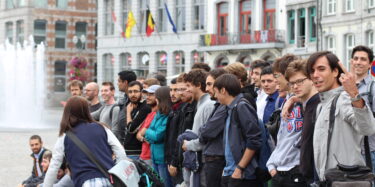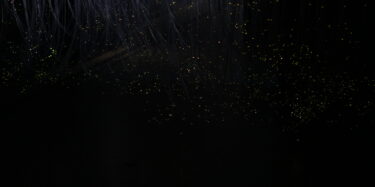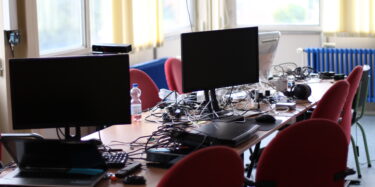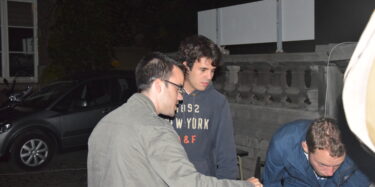
What’s eNTERFACE?
The eNTERFACE workshops aim at establishing a tradition of collaborative, localized research and development work by gathering, in a single place, a team of leading professionals in multimodal human-machine interfaces together with students (both graduate and undergraduate), to work on a prespecified list of challenges, for 4 complete weeks. In this respect, it is an innovative and intensive collaboration scheme, designed to allow researchers to integrate their software tools, deploy demonstrators, collect novel databases, and work side by side with a great number of experts. It brings together 80 researchers for a whole month, subsequently it is the largest workshop on multimodal interfaces.
The workshop is held on an anual basis and organized around several research projects dealing with multimodal human-machine interfaces design. It is thus radically different from traditional scientific workshops, in which only specialists meet for a few days to discuss state-of-the art problems, but do not really work together.
The eNTERFACE was initiated by the FP6 Network of Excellence SIMILAR. After the completion of SIMILAR, the workshop continued to attract wide interest under the aegis of the OpenInterface Foundation. It was organized by Faculté Polytechnique de Mons (Belgium) in 2005, University of Zagreb (Croatia) in 2006, Bogaziçi University (Turkey) in 2007, CNRS-LIMSI (France) in 2008, University of Genova (Italy) in 2009, University of Amsterdam (The Netherlands) in 2010, University of West Bohemia (Czech Republic) in 2011, Metz Supélec (France) in 2012, New University of Lisbon (Portugal) in 2013, and University of Basque Country (Spain) in 2014.

Members of the 1st eNTERFACE
workshop back in 2005.
Ten years later, the workshop is back to Mons.
How does it work?
- Experienced researchers are invited to propose research projects to be undertaken by a few people (5-10) during 4 weeks. The proposal should explain what to do, how many people are necessary, profile of these people, etc.
- Once the projects have been supervised and approved by the technical committee, they are listed on this website.
- Then there is a call for participation: students/researchers from all around the world send their CVs and choose the project they prefer according to their expertise or interest.
- Teams are built by the project leaders in cooperation with the organizers according to the preferences of the students/researchers and their suitability for the project.
- Finally, the team members come to Mons and spend four wonderful and productive weeks together. There is no registration fee for participants and accommodation will be relatively cheap.
Organizers
eNTERFACE’15 is organized by the University of Mons (UMONS), and it will take place at the Faculty of Engineering (FPMs) of Mons, Belgium.
The creation of the University of Mons (UMONS), founded on account of the merging of the University of Mons-Hainaut (UMH) and the Faculty of Engineering of Mons (FPMs), consolidates the Mons Higher Education Consortium. As of 2009-2010, UMONS took seat in the new academic landscape of the French Community of Belgium with:
- more than 1000 instructors, scientists, research scientists and technical and administrative staff members
- more than 5000 students from more than 40 nationalities
- 230 international partnerships with more than 50 countries spanning all 5 continents.
The team undertaking eNTERFACE 2015 is part of the NUMEDIART Institute for Creative Technology, with internationally recognised appraisal in the field of sound, image, video, gestures and biosignals processing for applications where human-computer interaction aims to prompt emotion.
The city of Mons, cultural capital of Wallonia, has been chosen as European Capital of Culture 2015.









